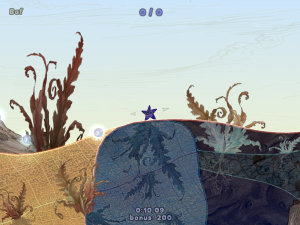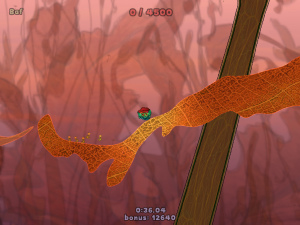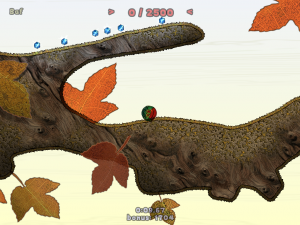Bizarre trappings are one thing. You can make a game with surrealist visuals, a reality-warping plot, and a player character with severe identity issues and an unclear agenda, and still make it a conventional first-person shooter. Killer 7 commendably complements its weird tone with weird mechanics.
The movement system occupies a point between the FPS and the rail shooter. There’s a button that makes you move forward, and another button that turns you around 180 degrees. (Kind of like Defender, come to think of it.) That’s pretty much it for movement. Sometimes, in the course of moving forward, you come to a junction and have a choice of direction to go in, but whenever there are enemies around, your movement options are pretty much advance or retreat. This may sound dumbed down, but somehow it feels more like it’s streamlined. The designers don’t want you to waste time on distractions like exploring every inch of a room looking for extra goodies or secret passages, so they don’t even provide the temptation.
(This isn’t to say that a more FPS-style gameplay is never workable. Once, I managed to take down a group of baddies that I knew to be lurking around a corner by repeatedly edging forward until only one was visible and sniping it. Still, the geometry that you spend your time running through is mostly just decorative.)
When you find enemies — you usually hear them laughing before you see them — you press and hold another button (specifically, the right shoulder button) to enter shooting mode. The view switches to first-person, a circular sighting aid is superimposed on the screen, and you can turn continuously with the left analog stick, but you can’t move until you drop out of this mode. In short, it’s like a static scene in a rail shooter, except that it’s not static — it happens wherever you happened to be when you drew your weapon, and you have the option of breaking off and backing up if you think it’s a good idea. The enemies, too, act like they’re in a rail shooter, shuffling toward you slowly, giving you a time limit to gun them down before they explode.
Most enemies start off invisible. “In fact, they don’t even exist”, says Iwazaru, the player’s possibly-also-imaginary advisor. You need to tap the left shoulder button while in shooting mode to scan the area and make them appear fully, and this quickly becomes a matter of habit, just part of the routine of drawing your weapon. I suppose the design purpose here is just to keep things from being too simple, to occupy the player’s motor nerves a little more fully. Now, it isn’t completely necessary to do a scan, because the enemies are never completely invisible. On my monitor, I can make out off-color outlines of guys even before scanning. But while they’re camouflaged, you can’t see the yellow glow that highlights their vulnerable point, located arbitrarily on an arm or leg, or sometimes on the throat. Hitting this spot is not only an instant kill for most creatures, it’s also the way to get the most blood out of them.
For the Killer 7 have an unending thirst for blood. There are two types, thin blood and thick blood, with different uses: thick blood can be spent on hints or processed into serum that you use to upgrade the characters’ stats (such as attack speed and power, and steadiness of aim), thin blood is used for healing and special abilities (such as charging a shot to do more damage). I frankly didn’t understand this whole system until I realized that “thick blood” is just another name for XP and “thin blood” is just another name for mana. The pursuit of blood is usually the only motivation for analog aiming: you can lock onto a target with the press of a button, but just hitting the center of mass until it dies will get you no blood at all. Even if you can’t hit the vulnerable spot, there’s bonus blood to be had from shooting off limbs or even heads. (Headlessness does not stop an enemy from charging.)
There are eight characters you can control, or one character with eight personalities that also have their own bodies. One of them, Harman Smith, is the leader, and only comes out in special circumstances. Another, Garcian Smith, has the specific job of “cleaner”: he’s the one who recovers dead personas so you can bring them back to life. You can bring out Garcian whenever you’re in one of the safe rooms where you can save your game and process blood into serum, but you don’t really want to expose him to danger if you don’t have to, because there’s no one to clean him up if he dies. The other six, all of whom are also named Smith, you can switch between at will, with a brief screen-warping effect that suggests a broken television. (Televisions and security cameras figure big in this game’s imagery.) They all have subtly different weapons and special abilities, and sometimes you need a specific one to bypass an obstacle: a padlock for the one who can pick them, a cracked wall for the guy with the grenades, a mystical barrier for the one who commands a ghost capable of dispelling them. All such barriers are obvious, and clearly marked on the in-game maps with an icon showing the face of the necessary character.
The really notable thing about all this is that the more experimental aspects of the gameplay are enabled by the weirdness of the story and setting. We’ve had games with instant kills through headshots for some time, but no rational justification for instant kills through elbowshots. But an irrational world needs no rational justification.
 Comments(0)
Comments(0)

